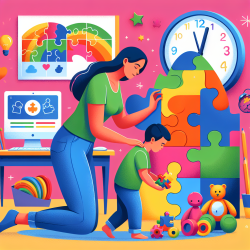Introduction
Depression among adolescents is a growing concern worldwide, and understanding the factors that contribute to this mental health issue is crucial for developing effective interventions. A recent study conducted in China's Hubei Province sheds light on the psycho-social factors associated with high depressive symptomatology in female adolescents and highlights the gender differences in adolescent depression. This blog will explore the findings of this research and discuss how practitioners can use this information to improve their skills and outcomes for children.
Key Findings from the Research
The study examined 4,100 adolescents in Wuhan city and Jianli county and found that the prevalence of high depressive symptomatology was 38.9% in females and 30.2% in males. Several psycho-social factors were identified as being associated with high depressive symptomatology in female adolescents, including:
- Age: Older female adolescents were more likely to experience high depressive symptoms.
- Single Parent Family: Female adolescents from single-parent families had a higher likelihood of experiencing depressive symptoms.
- Father's Education Level: Female adolescents whose fathers had a primary school education or below were at greater risk of depression.
Interestingly, the study found that the father's education level was a significant factor for females but not for males, suggesting that gender-specific interventions may be necessary.
Implications for Practitioners
For practitioners working with adolescents, these findings highlight the importance of considering family dynamics and educational backgrounds when assessing and treating depression. Here are some strategies practitioners can implement based on the research findings:
- Targeted Interventions: Develop interventions that specifically address the needs of female adolescents, particularly those from single-parent families or with fathers who have lower educational levels.
- Family Involvement: Encourage family involvement in therapy sessions to address family dynamics and improve communication between parents and adolescents.
- Educational Support: Provide resources and support for families to enhance educational opportunities for adolescents, which may help mitigate depressive symptoms.
Encouraging Further Research
While this study provides valuable insights, further research is needed to explore the different risk factors between female and male adolescents in China and other cultural contexts. Practitioners are encouraged to contribute to this body of research by conducting their own studies and sharing findings with the broader community.
To read the original research paper, please follow this link: Psycho-social factors associated with high depressive symptomatology in female adolescents and gender difference in adolescent depression: an epidemiological survey in China’s Hubei Province.










